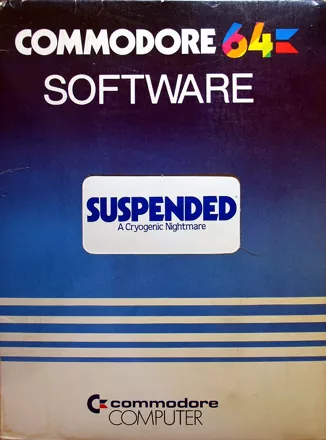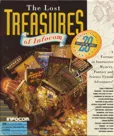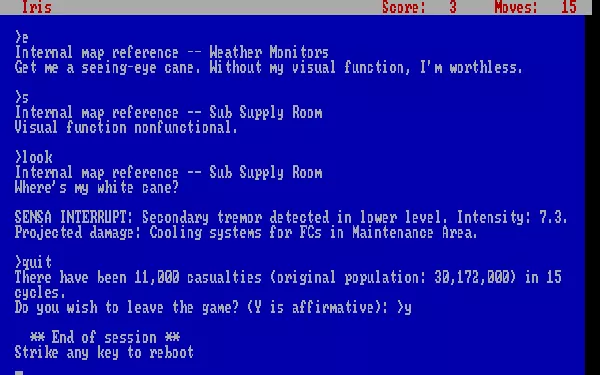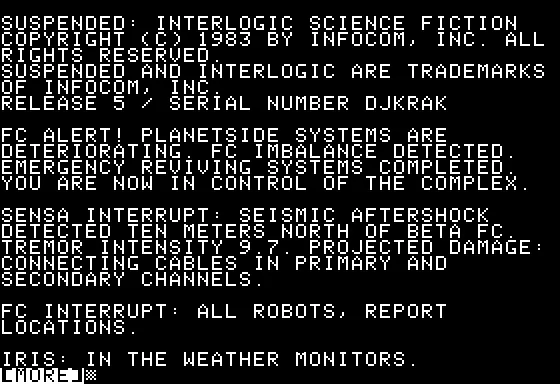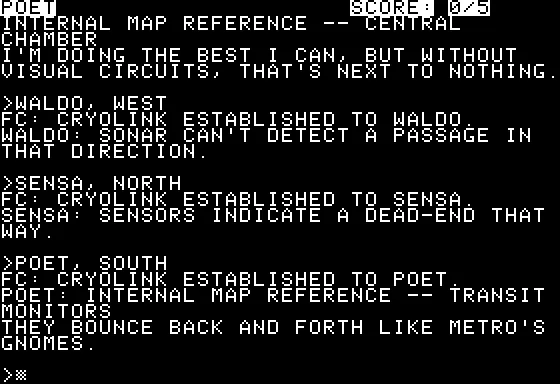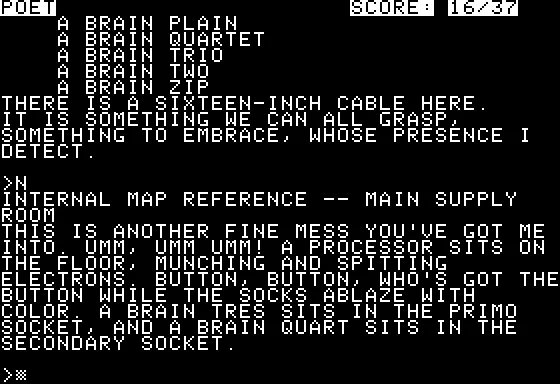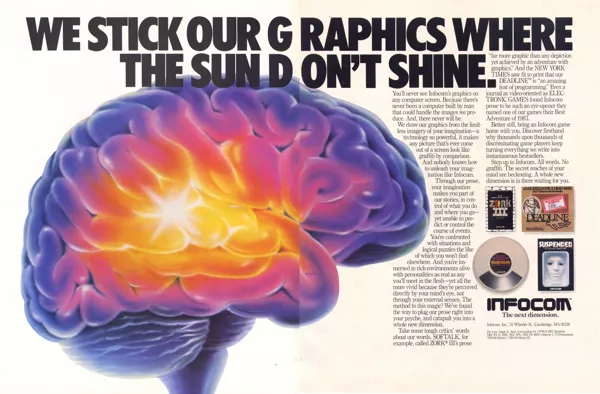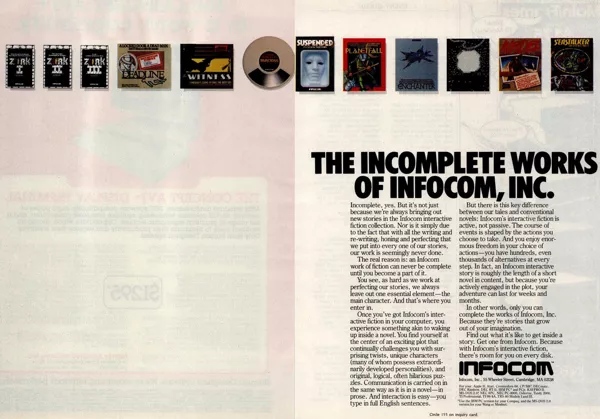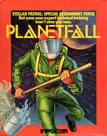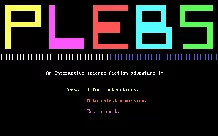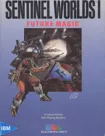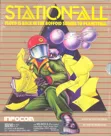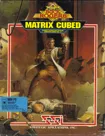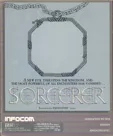Suspended
Description official descriptions
On a space settlement named Contra, a human being serves as a regulator for the planet's vital systems: he controls transportation, weather, and manages resources all while being in a deep sleep, through the neural power of his brain. Such a regulator is called Central Mentality. However, after five hundred years of stasis, the current Central Mentality suddenly awakens, greatly troubled by reports of computer malfunctioning and resulting problems in weather condition, food production, and transport. He must now act, and act quickly: the crew members assumed that he has gone insane, and are coming to disconnect his mind. But what can he do if his state of suspended animation prevents him from moving?
Suspended is a text adventure game with a twist: instead of navigating the protagonist, the player indirectly controls six robots that do his or her bidding, exploring the environment and interacting with it. Each robot has different functions and has its own way of seeing reality and reacting to events around it. Iris is the only robot that can see and therefore visually describe locations and objects; Whiz can provide technical information obtained from computers; the sonar-powered Waldo is good at holding items; Auda is an expert in sounds; the cryptically speaking Poet senses the flow of electric currents; finally, Sensa can detect magnetic and photon emissions. The player advances in the game by using the different abilities of the robots and solving puzzles.
Groups +
Screenshots
Promos
Credits (PC Booter version)
| Design |
Reviews
Critics
Average score: 88% (based on 8 ratings)
Players
Average score: 3.8 out of 5 (based on 55 ratings with 4 reviews)
One of Infocom's finest innovations
The Good
In every Infocom game I can think of, except this one, you play the role of one person, interacting with the world. In Suspended, however, your character is frozen in a cryogenic tube, in a state of suspension. Your hands and eyes in the game world are six robots - each with their own specialized sense (sight, hearing, touch, etc).
This was a very unique concept, for the text adventure genre - every room, and every item has six possible descriptions, depending on which robot you are currently controling. The game could not be completed, unless teamwork between all six robots was used. Luckily, the game comes with a map of the underground complex, and a marker for each robot, enabling you to keep track of their locations.
Your "score" is based on the number of casualties on the planet; your "score" increases with the more time you take to repair surface systems. Time is short, however - most of the repairs you need to perform are "band-aid" fixes, and you must focus on the task at hand of repairing the FCs.
The Bad
Turn limits were imposed; this significantly cut down on the ability to explore the complex with each robot. However, to make up for this, the game had configureable difficulty levels. Using a "custom" difficulty level, you can set the number of turns you have. Setting it to a high enough number allows enough time to explore the entire complex.
The Bottom Line
While a departure from the "standard Infocom way" of gameplay, Suspended is still quite enjoyable, and has a fairly good replay value (in that different robots can accomplish the same task, just in a slightly different manner).
DOS · by Dave Schenet (134) · 2001
High Water Mark for Interactive Fiction
The Good
What are text adventures best at, that graphic adventures cannot do? They relate everything via text, so if you are simuating a sense like smell or thought patterns based in Shakespere, you can only do it here. That is the point of this game, where you try to save the world by assuming the personas of 5 different robots, who each percive the world in diffrent ways. Thus, only by getting them all in the same room can you truly understand what is there. Also, game is slightly "replayable" (you get a score based on how efficently you solved the puzzles).
The Bad
Hard due to the subject matter, but oh so rewarding when you figure it out.
The Bottom Line
The best (and most abstact) adventure game of our time.
DOS · by Tony Van (2796) · 1999
One of the Most Original Ideas for a Game Ever
The Good
As the 'main' character, you couldn't move, and were trapped in an extremely dark suspended animation cylinder. If that was it, then this would have been an extremely lame game. However, that wasn't it, beacause of the--The Robots.
Roaming the compex, monitoring various things, were six robots. They were so diverse, many of them majoring in one particular sense while weak in the other senses, each of them with there unique personalities (especially Poet). I enjoyed the plot.
The Plot involved subconsciously monitoring a nation's control station wich had the ability to create nearly-instant havoc or sustain the current tranquility. It was like playing God, but without the freedom, because if you became to lax in your duties some angry folks would come and... well, "take care" of you.
Suspended had the ability to put you in the game, with vibrant imagery. I could imagine myself as the robots, with their different sensors, detecting movement and analyzing objects. Also, I think this is one of the first (if not THE first) IF/Adventure game which allowed you to assume the identity of another entity.
The Bad
It was hard. Really hard. The manual was kinda lax on it's duties but there were no angry folks to "take care" of it.
The Bottom Line
It's definitely worth a play-through, and if Infocom/Actionvision were going to remake this game, I'd be one of the people in line at the checkout line.
I remember just when I'd really got into cracking the game there was this huge blizard that struck the north-east and our power went down for two v-e-r-y l-o-n-g weeks (almost two weeks, but it seemed like three months). While I sat without electricity I carefuly read the sections of the manual that described the robots, and produced a sketch of each of them.
(DISCLAIMER: These sketches were born intermittently in between other activities -- I'm not a total nerd. Isn't it funny what the lack of electricity can do to you?)
DOS · by rs2000 (13) · 2001
Trivia
Difficulty
Suspended has a number of preset difficulty levels, increasing (or decreasing) the difficulty of the game as a whole. There was also a "custom" difficulty setting, which allowed you to manually set various parameters in the game. (At which turn do the earthquakes happen? At which turn does the coolant system fail? At which turn does the human troubleshooter-team arrive? What is the initial positions of the six robots? And so on.)
But, humorously, there was also a pre-set "Impossible" difficulty setting, and it lived up to its word - if you chose this setting, the sun explodes within the first few turns, dooming the entire planet. Infocom (jokingly) offered a reward to anyone who could complete the game on the Impossible setting. Needless to say, nobody ever won that contest.
Extras
The game originally shipped with a plastic mapboard of the facility and 5 vinal counters for the robots. This was to help you visualize where everybody was during the game.
Statistics
(From The New Zork Times Vol.3 No.2 Spring 1984)
Some statistics about Suspended: Apparent number of rooms (those seen by the player): 61 * Number of rooms: 63 (for various arcane programming reasons, some locations are inaccessible to the player) * Number of different ways to die: 6 (this refers to you, the person in the cylinder, not the individual robots) * Number of words in vocabulary: 676 Number of takeable objects: 32**
Awards
- Computer Gaming World
- November 1996 (15th anniversary issue) – #58 in the “150 Best Games of All Time” list
- November 1996 (15th anniversary issue) – #4 Hardest Computer Game
Information also contributed by Belboz, Dave Schenet and PCGamer77
Analytics
Related Sites +
-
Infocom homepage
At this site you can find information on ALL of Infocom's interactive games, Infocom related articles, sample transcripts, InvisiClue hints, walkthroughs, maps and information on buying Infocom games today. -
The Commodore Zone
All about the game, with introduction, images, related links and comments area. -
The Infocom Gallery
High-quality scans of the grey box package and manual of Suspended.
Identifiers +
Contribute
Are you familiar with this game? Help document and preserve this entry in video game history! If your contribution is approved, you will earn points and be credited as a contributor.
Contributors to this Entry
Game added by Brian Hirt.
TI-99/4A added by Rola. Apple II added by Droog. Amstrad CPC, CP/M added by Kabushi. Atari 8-bit, TRS-80 added by Martin Smith. Commodore 16, Plus/4, Macintosh, Amiga added by Terok Nor. Amstrad PCW, Tatung Einstein added by Игги Друге. Atari ST, Commodore 64 added by Belboz.
Additional contributors: Dietmar Uschkoreit, Tony Van, Belboz, Martin Smith, Pseudo_Intellectual, mo , formercontrib, c64fan, Patrick Bregger.
Game added March 1, 1999. Last modified June 22, 2024.


